69:45
BIS Records BIS 2147 SACD
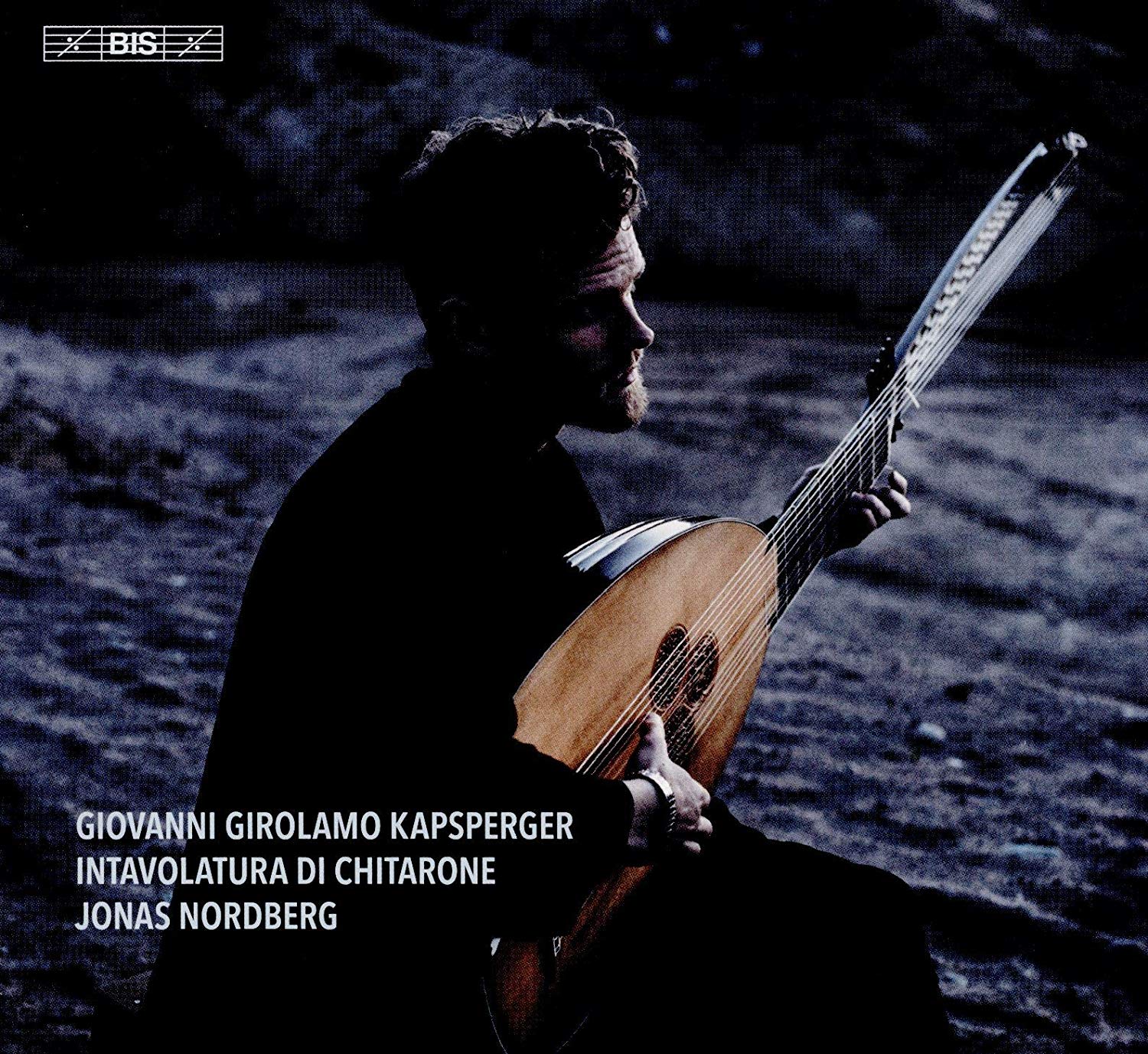

Tafelmusik Baroque Orchestra, Elisa Citterio, dir
75:25
Tafelmusik TMK1039CD
For nearly forty years Tafelmusik, Canada’s leading period instrument orchestra, was directed by violinist Jeanne Lamon, but in 2017 she was succeeded by another woman violinist, the Italian Elisa Citterio. The present collection of Vivaldi concertos marks Citterio’s recording debut with the orchestra, and it is interesting to find that on the basis of it she has already put a strong individual mark. Citterio’s background includes work with all the major Italian period instrument orchestras and there are times here when we might almost be listening to Accademia Bizantina or Il Giardino Armonico. There is the same nervous, at times spiky, intensity brought to Vivaldi’s allegros, the same grand sweep to ritornellos, the same relishing of long cantabile lines, and the same careful dynamic gradations. Yet even in writing that I’m conscious of being slightly unfair to Citterio, since one of the principal positives of this outstanding set of performances is that they reveal she has a strong musical personality. There is hardly a routine moment here, no mean achievement when it comes to a batch of Vivaldi concertos. Take for example the popular Lute Concerto in D, RV 93, hardly a masterpiece and a work that can easily outstay its welcome. Superbly played throughout by Lucas Harris, the opening movement is here given an understated delicacy that introduces an unexpected aura of mystery. The following Largo is taken very slowly, but enriched by decoration from the soloist that gives the movement an improvisatory freshness, while the final movement is again unassertively presented, but distinguished by the precision of Harris’ fingerwork.
This freshness of approach is a feature of the whole programme, which has been well planned to include a diverse set of concertos that allows some of Tafelmusik’s outstanding players an chance to shine. Thus in addition to the lute concerto we are given violin concertos in C minor (RV 761), known as ‘Amato bene’, and E major, the well-known ‘L’amoroso’ (RV 271), the 4-violin Concerto in B flat, RV 553, a double oboe Concerto in C, RV 534, a bassoon Concerto in D minor, RV 481 and the Concerto in D for 2 violins and 2 oboes, RV 564a. The programme is completed by the overture to the opera Ottone in villa (Venice, 1713).
Among these works, the two minor key concertos are exceptional. The nervous intensity and restless spirit of the opening Allegro of the C minor Concerto are splendidly captured by Elisa Citterio, while the filigree of the marvellous central Largo, taken rather too slowly, is spun with affectionate elegance and the final Allegro played with a bright edginess that does not exclude moments of fantasy and bizzarrie also apparent elsewhere in Citterio’s playing. The bassoon concerto is another outstanding work, played quite superlatively by Dominic Teresi. In the opening Allegro the soloist alternates the slighty mournful tones unique to his instrument with gurgling passage work, while the chromatic dissonance of the succeeding Larghetto, a quasi accompanied recitative and love-sick aria, reaches depths of profound desolation.
My only reservations concern the tempo of largos; it is odd to find Citterio taking the Adagio non molto central movement of RV 564a at a faster tempo than most of them, while the familiar Italian fondness for over-intrusive plucked continuo is here particularly annoying in the central Largo of RV 553. Tafelmusik’s CD production people might also care to consider rather better notes than the scanty generalised effort included here. None of that detracts from the fact that this is the most stimulating and thought provoking CD of Vivaldi concertos I’ve heard in some while.
Brian Robins
Click here to buy the CD on amazon.co.uk.
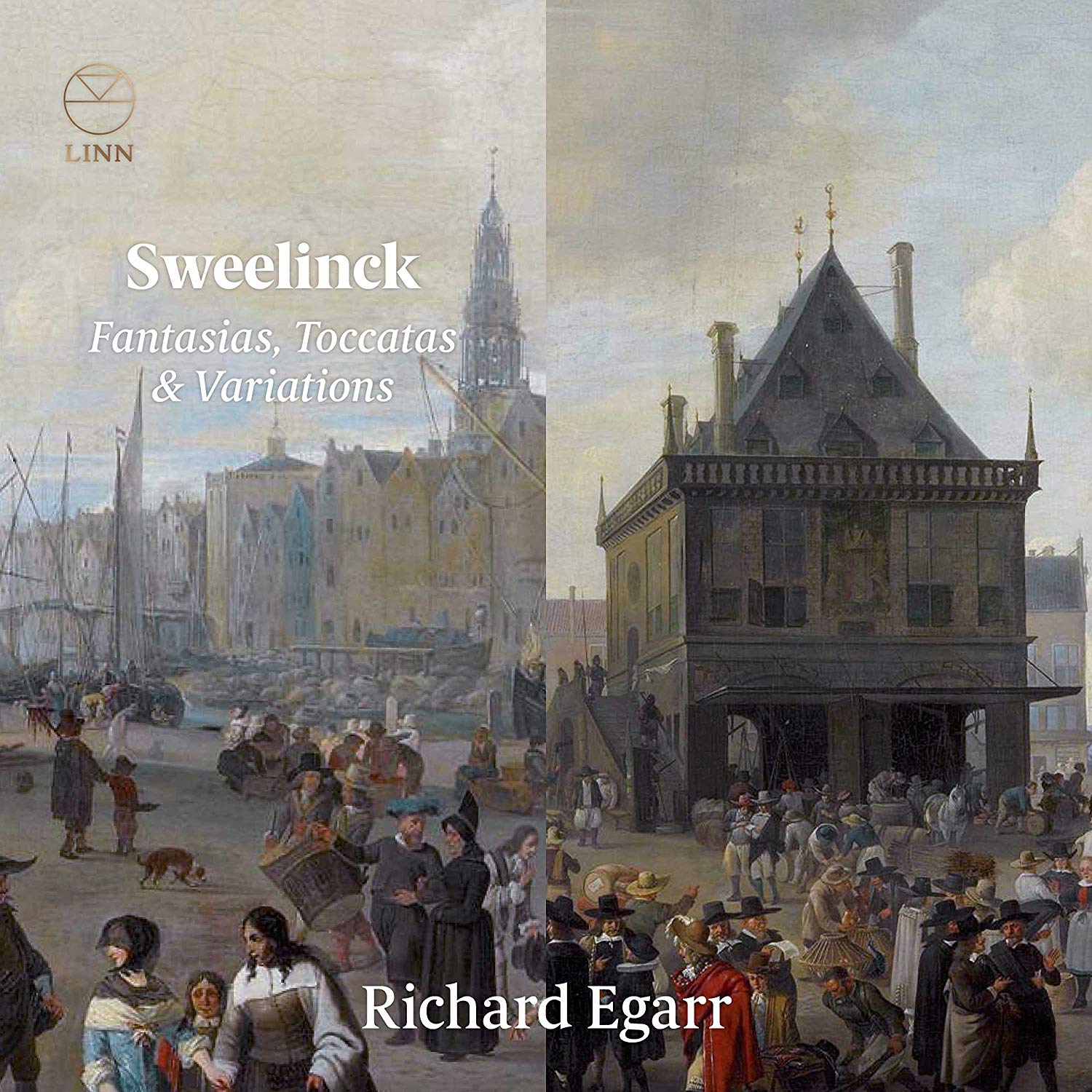
Richard Egarr harpsichord
76:13
Linn Records CKD 589
This recording has all the signs of having been a labour of love for Richard Egarr who self-confessedly set out to to make the music vibrant and exciting, rather than what he sees as the non-expressive and detached (aka ‘colourless and academic’) way Sweelinck has traditionally been performed. I’m not sure that’s a fair judgement of all previous recordings but this one does certainly succeed in bringing the music to life. Beautifully recorded on Egarr’s own Ruckers copy by Joel Katzman at 393 Hz, with a close-up acoustic, it successfully recreates the sort of genial late-night domestic music-making among friends which Willem Baudartius described in Sweelinck’s Amsterdam house (referred to in Egarr’s sleeve note). The playing reflects that milieu too, never too showy but always firmly committed and showing a deep-rooted understanding of each of the genres represented. He starts with an extended Praeludium Toccata [Seiffert 21] which shows the full breadth of Sweelinck’s art and its debt to his English musical forbears. In some ways the four toccatas are the star pieces here, giving scope for both careful voice-leading and virtuosity. Five extended fantasias provide intellectual heft, including one on the hexachord which starts conventionally but ends in a riot of scales in all directions. The Fantasia Crommatica gets a particularly fine performance as do two sets of variations. The booklet gives us Egarr’s personal rationale for the recording but nothing much about the actual music. In this fine recording, he is probably entitled to assume that it can speak for itself.
Noel O’Regan
Click HERE to buy this CD on amazon.co.uk
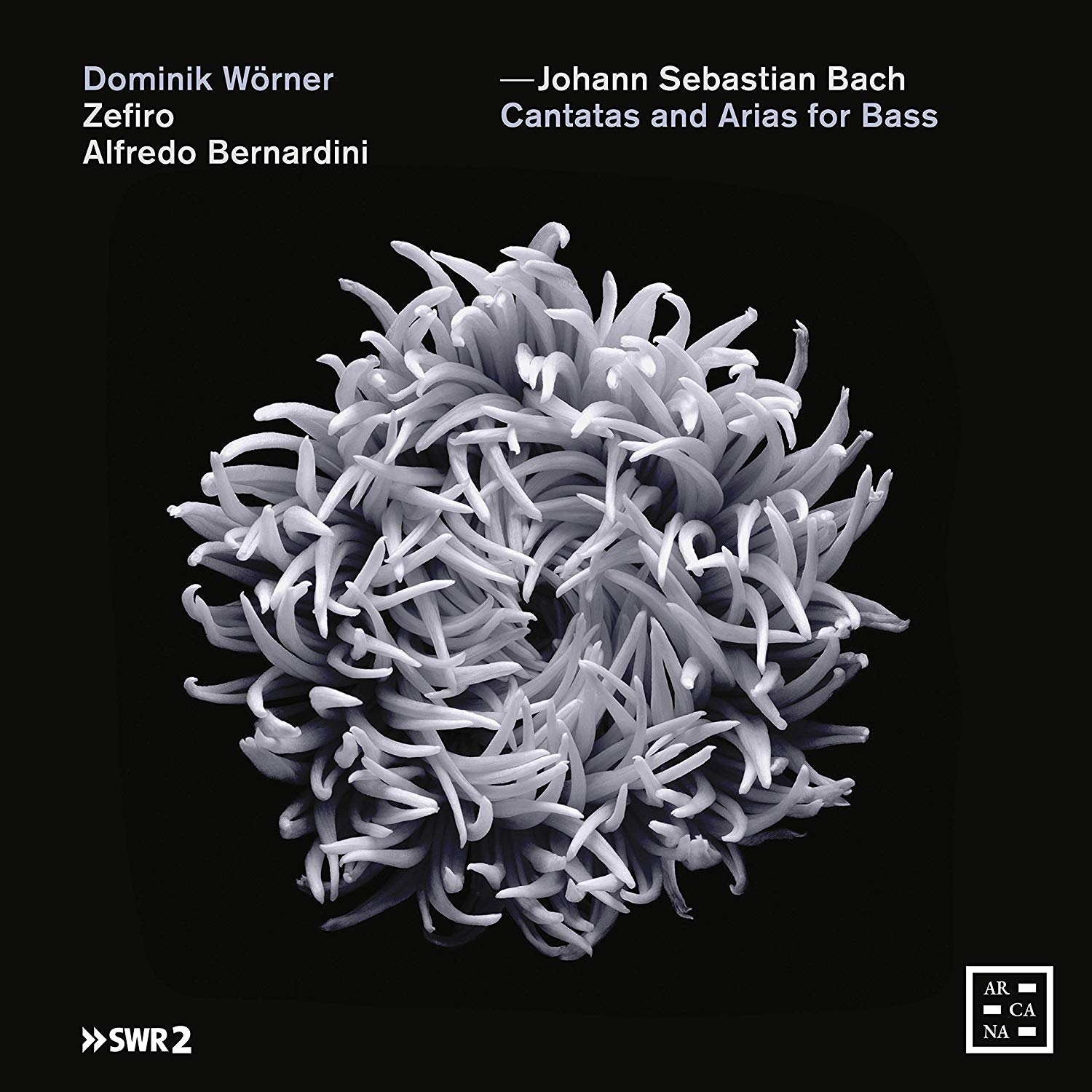
Bach: Cantatas and Arias for Bass
Dominik Wörner, Zefiro, Alfredo Bernardini
62:17
Arcana A466
BWV56, 82, 158 + arias from BWV20, 26, 101
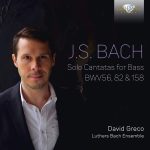
J. S. Bach: Solo Cantatas for Bass BWV56, 82 & 158
David Greco, Luthers Bach Ensemble
49:36
Brilliant Classics 95942
Click HERE to buy this CD on amazon.
It is entirely fortuitous that these two CDs with almost identical contents should arrive together for review. Dominic Wörner is a well-known name on German labels, and sings three cantatas here – BWV 82, 158 and 56 – together with the bass arias from BWV 22, 26 and 101. The model booklet has an essay by Peter Wollny and the texts in German, English and French. At the front are precise details of the tracks with who plays what in which cantata and on which instrument, and full details of the makers and dates are given. Zefiro uses single strings, a harpsichord in addition to the organ and Bernardini provides direction.
David Greco, an Australian who has sung with the Westminster Abbey choir and the Sistine Chapel choir, sings with an ensemble of (largely) ex fellow-students of the Royal Conservatory in the Hague, many of whom play in Groningen’s Lutheran Church. The director of the ensemble and organist Tyman Bronda was instrumental in this church getting the organ-builder Bernhardt Edskes to remake the lost organ originally built by Arp Schnitger in 1699-1717 for the church in which he worshipped when in Groningen. There is an interesting website on this organ, which makes sense of Schnitger’s various additions and restructurings made over a period of 18 years. It is tuned to A=415Hz and stands in a broad west gallery, with an additional detached console so that the director can play the recits and arias at least. Photographs on the website indicate that this console is a single manual with only 8’, 4’ & 2’ and the only thing I found disappointing in this recording was that I did not hear more substantial organ sound, even in the concluding chorales. No details are given of the other instruments, but a theorbo or archlute forms an audible part of the basso continuo.
The programmes on both CDs are identical save that Wörner’s disc includes the bass arias from BWV 20, 26 and 101, bringing the timing up to 62’17 as opposed to Greco who sings only the three complete cantatas and so is well under the hour. So, at first sight, the bonus of hearing Bernardini play the sparkling obbligato in BWV 20v and the three oboes (or two plus taille in 101iv) in 26iv makes the choice obvious.
However, several things make me want to recommend the CD by Greco and Bronda. First – and most fundamental – is the singing. While Wörner is well-practised in this repertoire, Greco’s clarity of diction and elegant, vibrato-less baritone tone win for me over Wörner’s more substantial bass sound. Second, the instrumental playing. I admire Berardini’s playing and direction and Zefiro’s wind band is splendid, but listen to the beautifully balanced violone in the last movement of BWV 82 from the Groningen Luthers band, who also use single strings; and the obbligato violin in BWV 158ii played by Joanna Huszcza is stunningly beautiful and a model of how to partner a voice in Bach’s cantata writing, as is the oboe playing of Amy Power in BWV 56iii.
What a lot we have to learn about how to perform Bach cantatas, and while there is no one ‘right way’, you can gain immense insight from listening to two versions side by side. Why, I wonder, did the Groningen group not give us the soprano chorale in BWV 158ii with the Sesquialtera on the organ rather than with four soprano voices and a doubling oboe which plays no further part in this puzzling cantata, if they judged the line to be in need of a boost? Perhaps they tried it – but it would have displayed the virtues of playing cantatas around a more substantial organ.
David Stancliffe
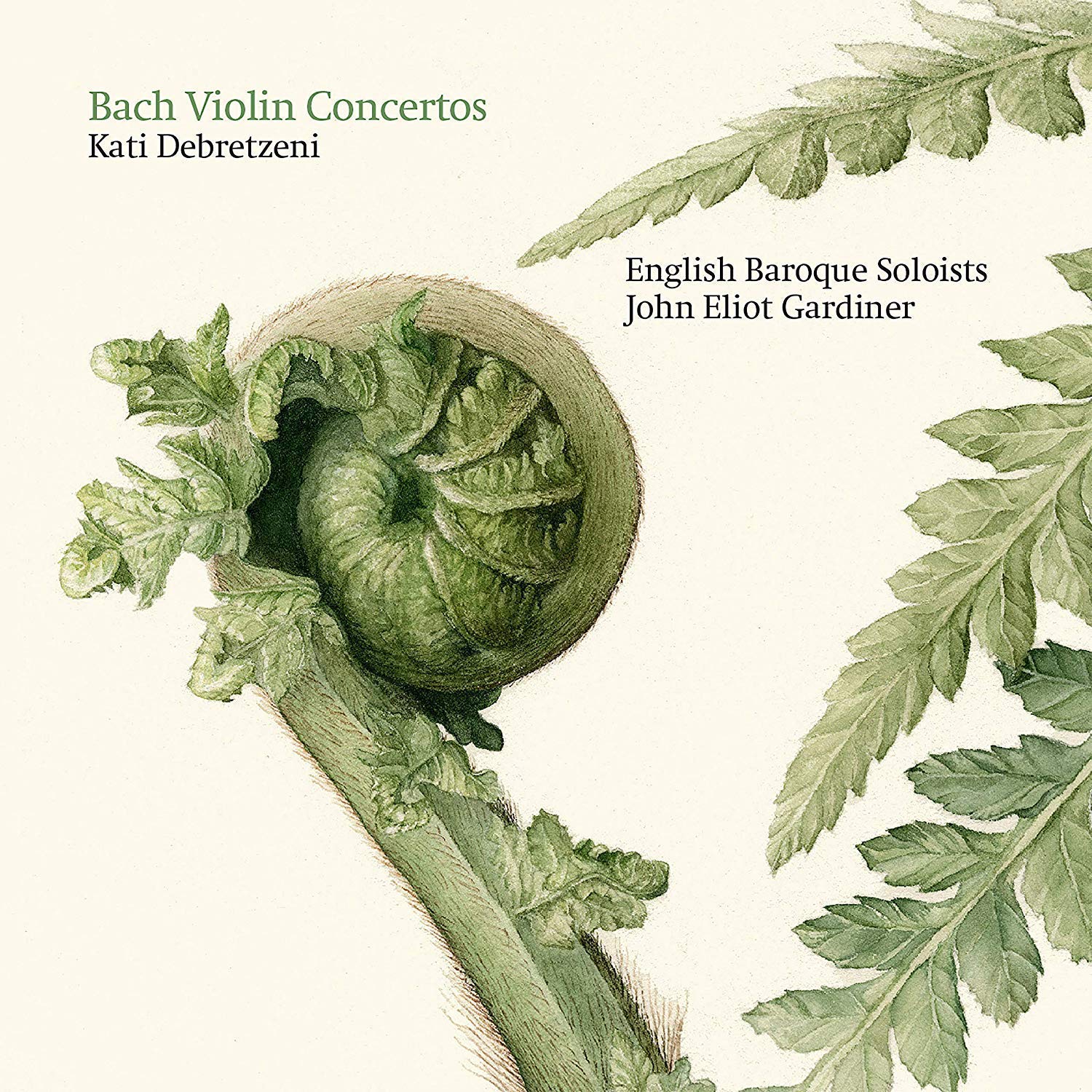
Kati Debretzeni, English Baroque Soloists, John Eliot Gardiner
70:15
Soli Deo Gloria SDG732
On this accomplished CD, Kati Debretzeni, the leader of the English Baroque soloists among other things, plays the violin concertos in A minor (BWV 1041) and E major (BWV 1042) as you would expect and then adds two reconstructions drawn from the harpsichord concertos – a new version of BWV 1053 transposed down a tone into D major with its singing siciliano middle movement and a version of BWV 1052 in D minor, which has long been posited as a violin concerto in origin.
Debretzeni recalls the moment in the Bach Cantata Pilgrimage of 2000 when the beautiful Trost organ in the Schlosskapelle in Altenburg that Bach had played and commented on developed a fault and they had to fit in a recording of BWV 146 the next morning before flying home. The first two movements of Cantata 146 with obbligato organ form part of what Bach used again in BWV 1052. A version of the final movement is in Cantata 188. She also reflects upon the large number of violin obbligati in the church cantatas with pleasure and clearly the interplay between these various sources has informed her judgment of how to reach back behind the decisively keyboard-style passagework with its built-in bass line to a plausible violin original which needs a reconstructed basso continuo.
I enjoyed her playing as much as her editorial additions and decisions. Spirited and rhythmically infectious, she is well served by her 3.3.2.2.1 colleagues from the EBS and the beautifully judged continuo playing of James Johnstone. The slow movements never loose momentum – how easy it is to degenerate into a maudlin self-indulgence – while the outer movements never collapse into a scramble. They are helped by the wonderfully warm acoustic of St Jude’s, Hampstead Garden Suburb where they recorded.
Like Debretzeni, I hope that her versions find their way into the repertoire of many violinists. Bach did not only quarry his ‘instrumental’ work for concerto movements but used material from the cantatas, whether sacred or secular, to provide the sounds of heaven, and from the number of recordings of ‘arrangements’ appearing now, I can see that the process of re-inventing Bach’s multiple versions is set to continue. When they are in the hands of players so immersed in the whole oeuvre as this, we have a good deal to look forward to.
David Stancliffe
Click HERE to buy this CD on amazon.
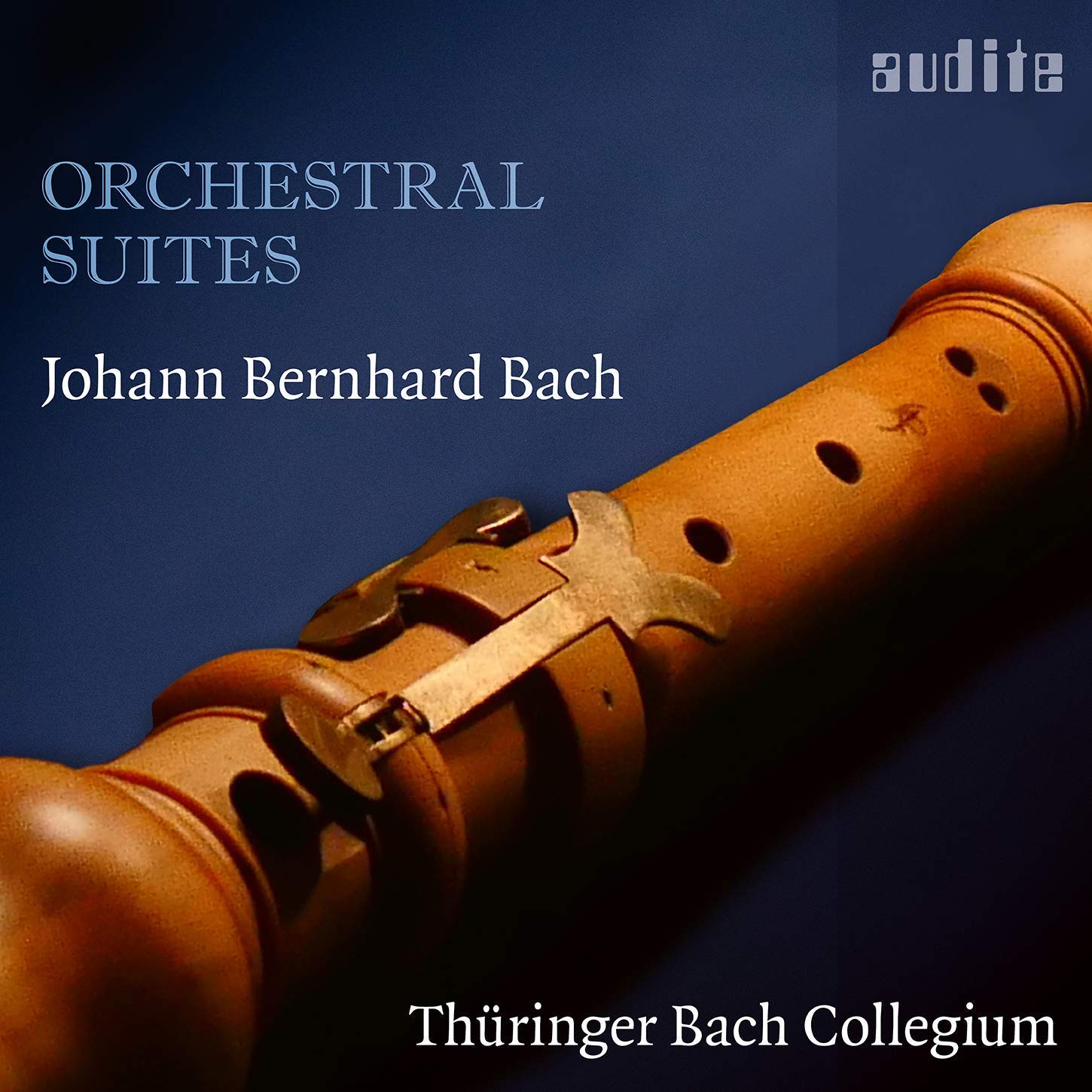
Thüringer Bach Collegium
82:22
audite 97.770
These four suites by Johann Sebastian’s second cousin and near contemporary display his skill and invention. Cast in the form of suites with a series of dances, some movements feel more like concerti so close are they to the Italian and French models current in the cultured courts of the principalities of central Europe, where French cuisine and dress and Italian music were known.
From 1703, Johann Bernhard held the post of organist in Eisenach till his death in 1749, overlapping between 1708 and 1712 with Telemann. He was also harpsichordist to the admired court orchestra of Duke Johann Wilhelm of Sachsen-Eisenach.
J. S. Bach had copied out at least three of these suites for the Collegium in Leipzig, and it is because of this set of parts that Johann Bernhard’s music survives. The two Bachs were cross godparents to each other’s children, and Johann Bernhard’s ease with the French as well as the Italian style gives us an interesting glimpse of the cosmopolitan nature of this small Saxon court.
The competent players of the Thüringer Bach Collegium use single strings plus the director, Gernot Süßmuth’s solo violin and muster two oboes, a taille and fagotto, and one is heard playing recorder and traverso.
The performances are snappy, and sometimes a little rustic – some slapping of the instruments from time to time; but the major and in the end irritating fault is that the kontrabass is either miked far too closely or else just plays insensitively. With single strings, I would have been quite content with a violone or bass violin at 8’ pitch, but a substantial double bass thumping away – frequently joined by the harpsichordist’s lute stop – is an error of judgment and doesn’t blend with the rest of the band as it should.
The music was recorded in the Georgenkirche in Eisenach and from the photo in the booklet the players were standing just east of the font in which JSB was baptised. The essay (in German and then in English) on where this music fits into the high Baroque in Saxony is admirably informative. But there is no information on instruments or temperament, which would have been a plus. The ensemble has already recorded concerti by Prinz Johann Ernst von Sachsen-Weimar on the same label, and is clearly performing a notable service in making this kind of court music available to a modern audience.
The music is novel, fills a gap in our understanding of court life in the early 18th century and is tuneful as well as original. If you can bear the kontrabass, you will enjoy this music.
David Stancliffe
Click HERE to buy this CD on amazon.
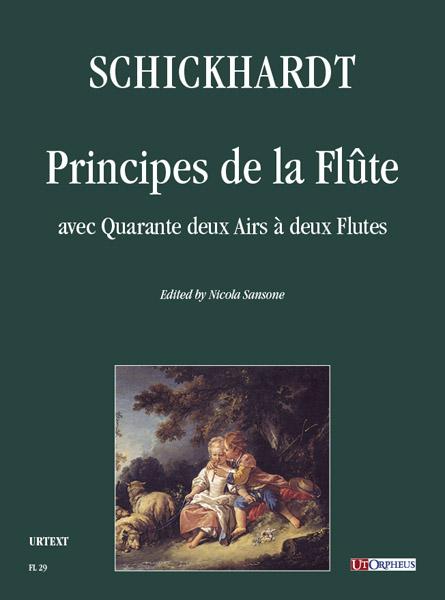
Schickhardt: Principes de la Flûte avec Quarante deux Airs à deux Flutes
Edited by Nicola Sansone
vi + 43pp.
FL29 ISMN 979-0-2153-2555-5
£18.95 (UK retail; from website €16.95 + P&P)
After what must be the briefest introduction to notation ever (Schickhardt’s four tables with explanations in French and Flemish), and a fingering chart including trills, it is straight into the music. The first piece is all of six bars and played in unison; the second is shorter but has more notes and tonguing indications, then the third is already conceived in two voices, introduces binary form and only has tonguing marks for certain parts, then the remaining 39 pieces work their way through a variety of keys and dance styles as well as occasional through-composed movements. While the upper voice might “take the lead” more, it certainly does not hog the limelight; the composer is very careful to involve both players in a thoroughly musical dialogue. None of the pieces is longer than two pages, and the majority are far shorter, so these are study rather than recital pieces. That said, I can definitely see a market for this nicely printed volume.
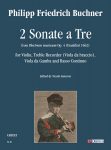
Buchner: 2 Sonate a Tre from Plectrum musicum Op. 4 (Frankfurt 1662)
Edited by Nicola Sansone
iv + 16pp.
FL30 – ISMN 979-0-2153-2556-2
£21.95 (UK retail; from website €19.95 + P&P)
Ostensibly published as a set of sonatas for strings, the “Viola da braccio” part-book for these two sonatas (nos. 10 & 11 in the set) give the scoring as “Flautto vel Viola da braccio”, so the editor is correct to publish them as recorder music but sadly a little hopeful in describing the piece on the cover as “Treble Recorder in G” – unless, of course, that is a misunderstanding of the English usage of Treble in this context to refer to Alto. Printed originally in the soprano clef (middle C on the bottom line), the opening phrase of Sonata X extends to E which is below the instrument’s standard range. But worse is to come – just in case someone was screaming at the screen about fudging that note – as bar 67 has a D, and then bar 78 has a C. Sonata XI has the same range, so there is little doubt that the music is actually far better suited to a Tenor Recorder. Were I to have edited this piece for publication, I would have ignored that fact that there is a separate bass part, since it is identical to the continuo line; rather than fifteen staves per page with the (also identical) figured bass squeezed into the available space, the layout would be much more comfortable. The music is well worth playing, and groups programming – for example – sonatas and concertos by Telemann for the same line-up should not hesitate to deploy these as variety.
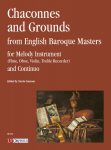
Chaconnes and Grounds from English Baroque Masters
Edited by Nicola Sansone
v + 30pp.
HS253 – ISMN 979-0-2153-2542-5
£23.50 (UK retail; from website €20.95 + P&P)
The eight pieces in this very useful volume are by Thomas Williams and Gottfried Keller (one ground each) and Gottfried Finger (three grounds and three chaconnes), all of them taken from four volumes printed in Amsterdam at the beginning of the 18th century. The range of the solo part suites the treble (=alto) recorder perfectly and the music here is far more demanding than in the Schickhardt collection above. Violinists should not be put off, though, as there is much elegant music here which will help younger players in particular to find ways to differentiate between each iteration of the theme above which they must weave their filigree. Ut orpheus has already published the source books (FL2, FL6, FL11 and FL17), should you fancy playing more of the repertoire than variations on a bass!
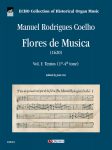
Manuel Rodrigues Coelho: Flores de Musica (1620) Vol. I: Tentos (1st-4th tone)
ECHO Collection of Historical Organ Music [volume 3]
Edited by João Vaz
xxvi + 128pp.
ECHOM3 – ISMN 979-0-2153-2606-4
£56.50 (UK retail; from website €50.95 + P&P)
I am by no stretch of the imagination a keyboard player. That said, in order to develop something akin to a reasonable technique, I remember shutting myself away in a practice room at university and devoting hours to playing Andrea Gabrieli’s organ music; it had the perfect blend (from my perspective, at least!) of sustained chords and moving parts, limited harmonic movement and few – if any – demanding leaps (especially in the left hand). That is also how I would described the contents of this excellent volume which contains 12 Tentos (three in each of the four modes). The original (as shown in the facsimiles dotted throughout the book) was printed on four staves; in compressing them on to two, the editor has (to my mind) sometimes been a little too pedantic (why print a superfluous bar’s rest when there are two other parts vying for the space on the staff at the time?) and not pedantic enough at others (where a note is inflected in one voice but not in the other, if the second accidental is not in the original, should it not be bracketed as an editorial insertion?) One small quirk of the printing is the notation of triplets; instead of the standard chunky 3 over the middle of the figure, this volume prints small 3s over the first note of each group which, in keyboard music, made me think they were fingering instructions. These are, however, minor faults in such an excellent volume. If I had access to an organ (or even a piano!), I think I might be tempted to sit down and play these pieces!
Brian Clark
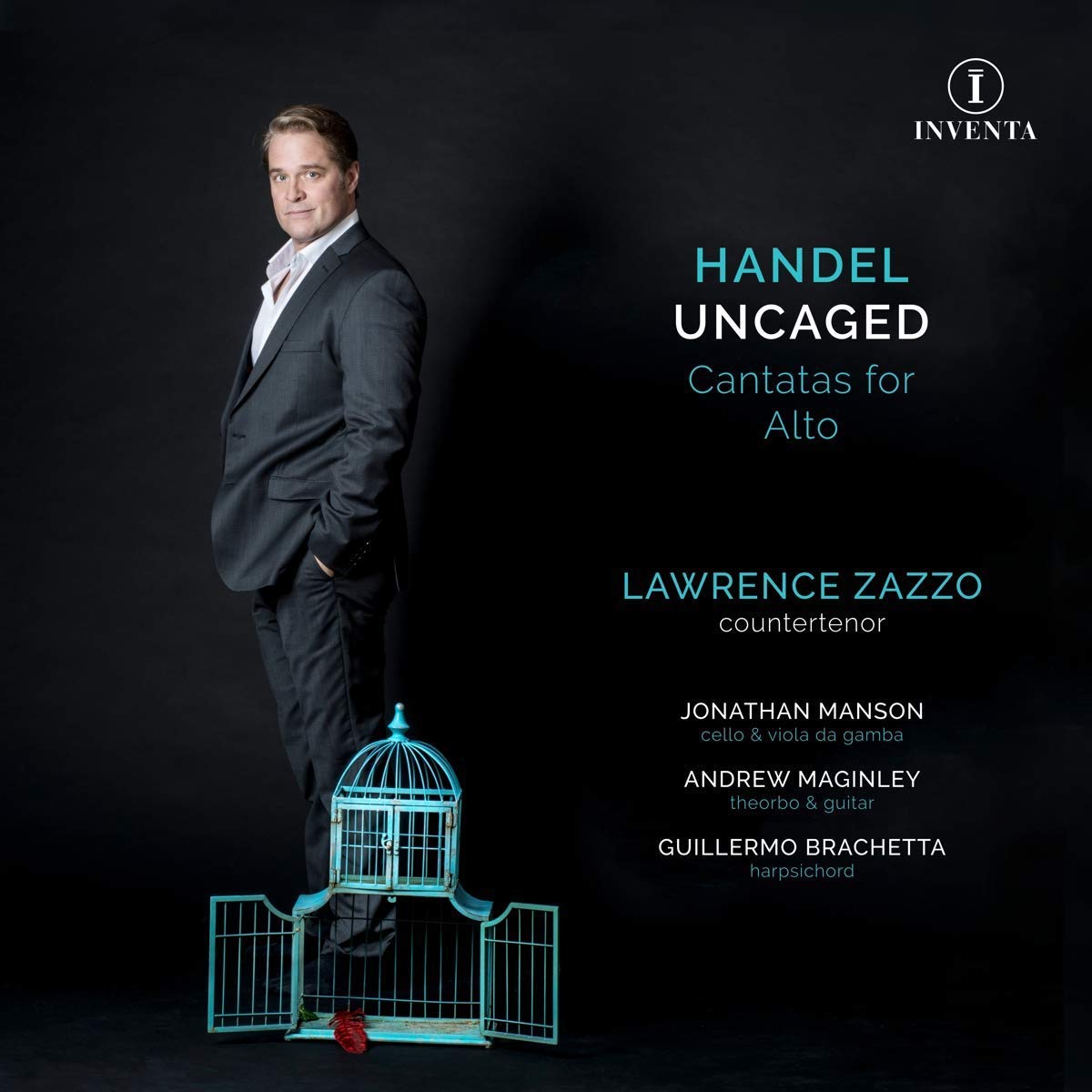
Cantatas for Alto
Lawrence Zazzo cT, Jonathan Manson cello/gamba, Andrew Maginley theorbo/guitar, Guillermo Brachetta harpsichord
74:26
resonus Inventa INV1002
The curious title of the CD is inspired by one of the most unusual of the cantatas composed during Handel’s youthful Italian sojourn, Amore uccellatore. The work itself has an odd background. It consists of two short cantatas, Venne voglia (HWV 176) and Vendendo amore (HWV 175), both extant in autograph scores and part of the repertoire. However a further unique and un-attributed copy in the Fitzwilliam Museum in Cambridge includes a dozen more numbers continuing a narrative cast throughout in the first person. Handel scholars have until recently remained undecided about the authenticity of the continuation, but recent work now adds to the likelihood of his authorship. The result is the longest of all the solo cantatas (not, pace Lawrence Zazzo’s notes, all the cantatas), running to no fewer than 30 numbers alternating recitative and mostly very brief arias, some simple AB structures rather than da capo. The tragi-comic text is rather different to the Arcadian topics usually found in cantatas of this period, consisting as it does of the first person narrative of a bird as it tries to evade capture (and re-capture) by Cupid and five women. The metaphor is obvious, but the ending, in which the bird is finally left in peace after losing its tail (and thus its beauty), is not clear. The arias, a mixture of the light-hearted and serious, are necessarily contrasted for such a lengthy work. As Zazzo notes, it is unlikely that the cantata would have been given uninterrupted, so he has found short instrumental pieces and improvisations to serve as links, a formula that works well.
In addition to Amore uccellatore three other early alto cantatas are included: Udite il mio consiglio, HWV 172 (1707), originally for soprano, but here heard in the shortened alto version; Stanco di più soffrire, HWV 167a (1708); and Figli del mesto cor, HWV 112, chosen by Zazzo for their ability to form a satisfying group.
As is clear from the foregoing, it is evident that much thought and preparation have gone into the programme, so it is regrettable to have to report that the performances in general do not do it full justice. The principle problem is the excessively slow tempo at which most of the more reflective arias are taken, which coupled with Zazzo’s inability to bring texts to life results in interpretations that remain obstinately one-dimensional. This applies particularly to the three additional cantatas, which have pastoral texts conforming to the archetypal love concerns of shepherds and shepherdesses being resolved or unresolved, as the case may be. Zazzo seems to find more to interest him in the text of Amore uccellatore, particularly in the lighter arias, which he projects with greater intent and agreeable good humour. Yet vocally, too, I have heard him in better voice; the slow tempos contributing to both occasional insecurity and excessive vibrato, prevalent in sustained passages. Nonetheless there is always pleasure to be had from Zazzo’s pleasing timbre and ease of production. His support is technically unexceptionable, but there too I find little to convey the Italianate verve or lyricism inherent in the music of the young Handel. Ornamentation is fairly un-ambitious, with turns poorly articulated and no sign of such standard improvisatory devices as the messa di voce or trill. Otherwise on a musical level there is little here to complain of, but it is to be honest all a little worthy and ultimately uninspiring. The CD’s greatest value is its inclusion of the first complete recording of Amore uccellatore.
Brian Robins
Click HERE to buy the CD on amazon.co.uk.
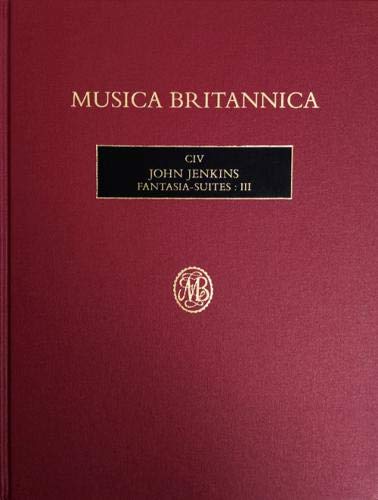
Musica Britannica CIV
Transcribed and edited by Andrew Ashbee
Stainer and Bell, 2019 ISBN 978 0 85249 956 6
(ISSN 0590-2954; ISMN 979 0 2202 2545 1)
xxxvii (including three plates), 186pp. £105
This third volume of Ashbee’s edition of Jenkins’ fantasia-suites for treble, bass and organ includes the 17 entries in the Viola da Gamba Society’s Group I (comprising a fantasia, almain and ayre) and bothof their Group IV entries (where the sequence is fantasia, air, corant). There are four sources for the first group and five for the second and, with typical care and precision, the editor lists even the smallest variance between them.
I cannot recall ever hearing these pieces in performance. As Ashbee says in his introduction, the last two suites are entirely different in character from the first 17. For one thing, both of the string parts are far more technically demanding – the fantasy of no. 18, for example, has wide leaps and demisemiquaver (32nd note) scales as well as chords for the bass viol. The original organ part survives for only the first movement of these two suites, and even the figured bass that exists for the next three movements is lost for the final air and corant; Ashbee has done an excellent job in reconstructing them.
As usual with Musica Britannica, the book is itself thing of great beauty, printed on luxurious paper and handsomely bound. This is the sixth volume in the series devoted to Jenkins, and I am sure it will not be the last.
Brian Clark
The publisher’s website is HERE.
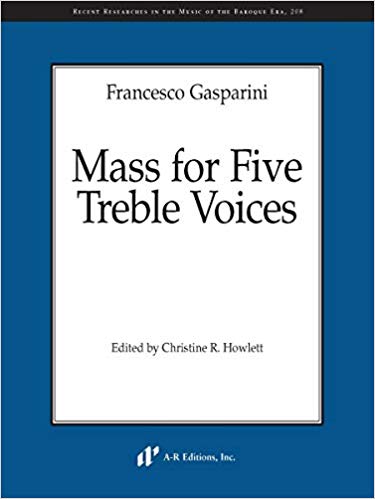
Recent Researches in the Music of the Baroque Era, 208
Edited by Christine R. Howlett
x, four plates, 80pp.
A-R Editions, Inc. ISBN 978-1-9872-0281-6 $150
I have known about this work for many, many years so it is a real pleasure to welcome a fine edition of it. Unusual not only for its scoring (SSSAA & Basso contiuo) but also the fact that it is a full mass (with Credo AND Agnus Dei), it is – as Christine Howlett says in her fine introduction to the work – a showstopper for the female singers of the Pietà in Venice, where Gasparini was maestro di coro from 1710. There are solos and duets but much of the work actually does use a five-part texture, though the composer is careful to deploy the voices in a variety of combinations to maximise aural variety, including having two or more voices sing passages in unison. All in all, this is an excellent edition of a very exciting work and I sincerely hope that it can be made available at bulk discount price to female choirs who will simply love it!
Brian Clark
Click HERE to buy it on amazon.com